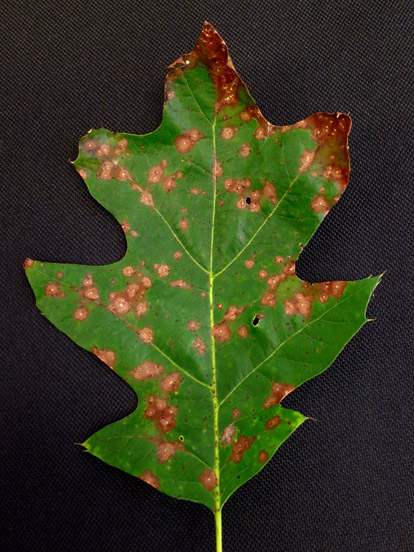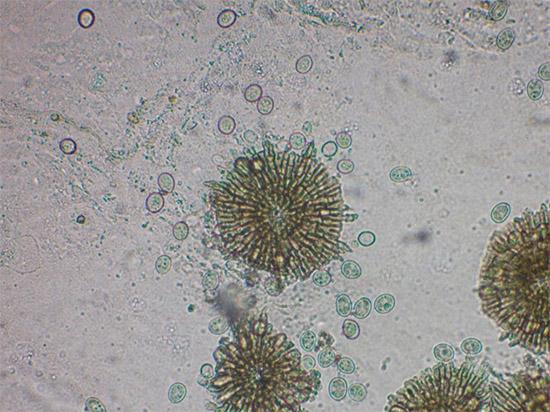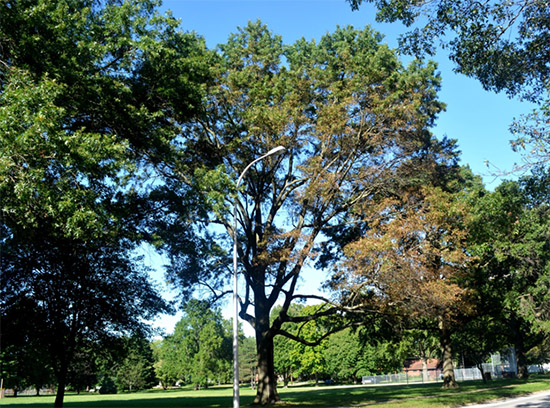Issue 14, August 29, 2017
Tubakia Leaf Spot
Tubakia leaf spot is a fungal disease caused by the pathogen, Tubakia dryina. It is a common sight on oak trees late in the summer. All oak species are susceptible to this disease, but those within the red oak group are more commonly affected. This leaf spot is often associated with stressed trees, especially Pin oaks with symptoms of iron chlorosis. While the disease is mostly found on oak trees; other potential hosts include maple, hickory, chestnut, redbud, ash, black tupelo, sourwood, sassafras and elm.
Tubakia leaf spot that appears late in season. The symptoms are similar to and are often confused with those of anthracnose. As rule of thumb, oak anthracnose symptoms usually appear late spring to early summer (May-June), while tubakia leaf spot occurs late summer with symptoms appearing in July and August. Tubakia leaf spot lesions will vary with host susceptibility and environmental conditions. The lesions start as small water soak areas. They become evident as they enlarge and transition to a reddish brown color (Photo 1). Severe infections may cause premature leaf drop, a symptom which can be alarming to those scouting for oak wilt. The Tubakia pathogen is fairly easy to confirm in a diagnostic laboratory with the aid of a microscope. It produces a distinctive disc-shaped fruiting body which is composed of mycelia and spores and called a pycnothyrium (Photo 2). Symptoms tend to be most severe on the lower branches where moisture accumulates and remains for longer periods of time (Photo 3).

Photo 1. Northern red oak leaf with numerous Tubakia Leaf Spot lesions.

Photo 2. Tubakia pycnothyrium (Disk-like fruiting structures)

Photo 3. Lower branches of an oak infected with Tubakia leaf spot (Urbana, IL. Sept. 2016)
Tubakia leaf spot is more prevelant in years with abundant rainy weather and moderate temperatures. These conditions promote infections and to allow the spread of this fungus. The disease is much less common during years with predominately dry weather.
While the symptoms may appear alarming, the disease develops late enough in the season that there are no long-term adverse effects on tree health. As a result, treatment with fungicides is not usually recommended. Raking and removing fallen leaves may reduce innoculum in the surrounding area, thus limiting disease occurance the following growing season. Promoting tree vigor and alleviating any potential stresses to the tree is also reccomened. (Travis Cleveland)
Author:
Travis Cleveland